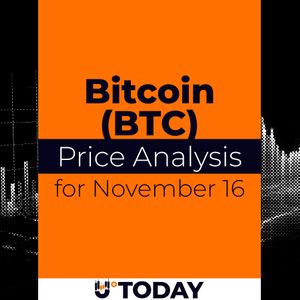BitcoinWorld Stunning USDT Whale Transfer: 1.08 Billion Moves from Aave to HTX in Massive Crypto Shift In a stunning development that’s shaking the cryptocurrency world, Whale Alert has reported a massive USDT whale transfer involving 1,086,765,600 USDT moving from Aave to HTX. This colossal transaction, valued at approximately $1.086 billion, represents one of the largest single movements of stablecoin we’ve witnessed this year. But what does this enormous USDT whale transfer actually mean for the broader crypto market? What This Massive USDT Whale Transfer Reveals The recent USDT whale transfer from Aave to HTX demonstrates several key market dynamics. First, it highlights the growing sophistication of large-scale crypto investors who strategically move assets between platforms. This particular USDT whale transfer suggests significant liquidity repositioning, potentially indicating upcoming major trading activities or portfolio rebalancing. Moreover, such substantial movements often precede notable price volatility across various digital assets. Why Do Whale Transfers Matter to Regular Investors? You might wonder why this USDT whale transfer should capture your attention. Large transactions like this provide valuable insights into market sentiment and potential price directions. When whales move substantial amounts of stablecoins to exchanges, it often signals they’re preparing to make significant purchases. This USDT whale transfer could indicate accumulating power building behind certain assets, making it crucial information for strategic investment decisions. Consider these key implications of major whale movements: Market sentiment indicators – Large transfers often reflect institutional confidence or concern Liquidity shifts – Movement between platforms affects trading volumes and price stability Price prediction signals – Historical data shows whale activities frequently precede market movements Platform health indicators – Transfers between DeFi and centralized exchanges reveal usage patterns Understanding the Aave to HTX USDT Journey This specific USDT whale transfer from Aave, a leading decentralized lending protocol, to HTX, a major centralized exchange, tells a compelling story about current market strategies. The movement suggests the whale might be transitioning from earning yield through DeFi protocols to preparing for direct trading activities. This USDT whale transfer pattern often emerges when investors anticipate short-term market opportunities requiring immediate liquidity access. How to Monitor Future USDT Whale Transfers Staying informed about significant USDT whale transfer activities can provide you with valuable market intelligence. Platforms like Whale Alert offer real-time tracking of major blockchain movements. By monitoring these patterns, you can develop better timing for your own investment decisions. Remember that while a single USDT whale transfer provides insights, consistent tracking of multiple transactions delivers more reliable market signals. The Broader Impact of Billion-Dollar Crypto Movements This monumental USDT whale transfer underscores the maturation of cryptocurrency markets. Transactions of this scale demonstrate that digital assets have evolved beyond retail speculation to include substantial institutional participation. Each major USDT whale transfer contributes to market liquidity redistribution, potentially affecting trading pairs, lending rates, and overall market stability across multiple platforms. In conclusion, this massive USDT whale transfer from Aave to HTX represents more than just numbers on a blockchain – it’s a significant market event with potential ripple effects across the crypto ecosystem. While individual investors shouldn’t base decisions solely on whale activities, understanding these movements provides valuable context for market analysis and strategic planning. Frequently Asked Questions What is a USDT whale transfer? A USDT whale transfer refers to large-scale movements of Tether stablecoin, typically involving millions or billions of dollars, usually executed by wealthy investors or institutions. Why do whales move USDT between exchanges? Whales transfer USDT between exchanges to access different trading pairs, take advantage of arbitrage opportunities, reposition liquidity, or prepare for major purchases. How can I track whale transfers like this? You can monitor whale transfers using blockchain explorers and specialized tracking services like Whale Alert, which report large cryptocurrency movements in real-time. Does this transfer affect USDT’s price stability? While individual transfers don’t typically affect USDT’s peg to the US dollar, massive movements can impact liquidity distribution across different trading platforms. What’s the difference between moving USDT from Aave versus a regular wallet? Moving USDT from Aave indicates the funds were previously used in DeFi lending/borrowing activities, suggesting a shift from yield generation to active trading strategies. Should retail investors worry about whale transfers? While whale transfers provide valuable market insights, retail investors should consider them as one factor among many in their investment research rather than sole decision-making triggers. Found this analysis of the massive USDT whale transfer helpful? Share this article with fellow crypto enthusiasts on your social media platforms to spread valuable market insights and help others stay informed about significant cryptocurrency movements. To learn more about the latest crypto market trends, explore our article on key developments shaping cryptocurrency institutional adoption. This post Stunning USDT Whale Transfer: 1.08 Billion Moves from Aave to HTX in Massive Crypto Shift first appeared on BitcoinWorld .
 Bitcoin (BTC) Price Analysis for November 16
Bitcoin (BTC) Price Analysis for November 16












